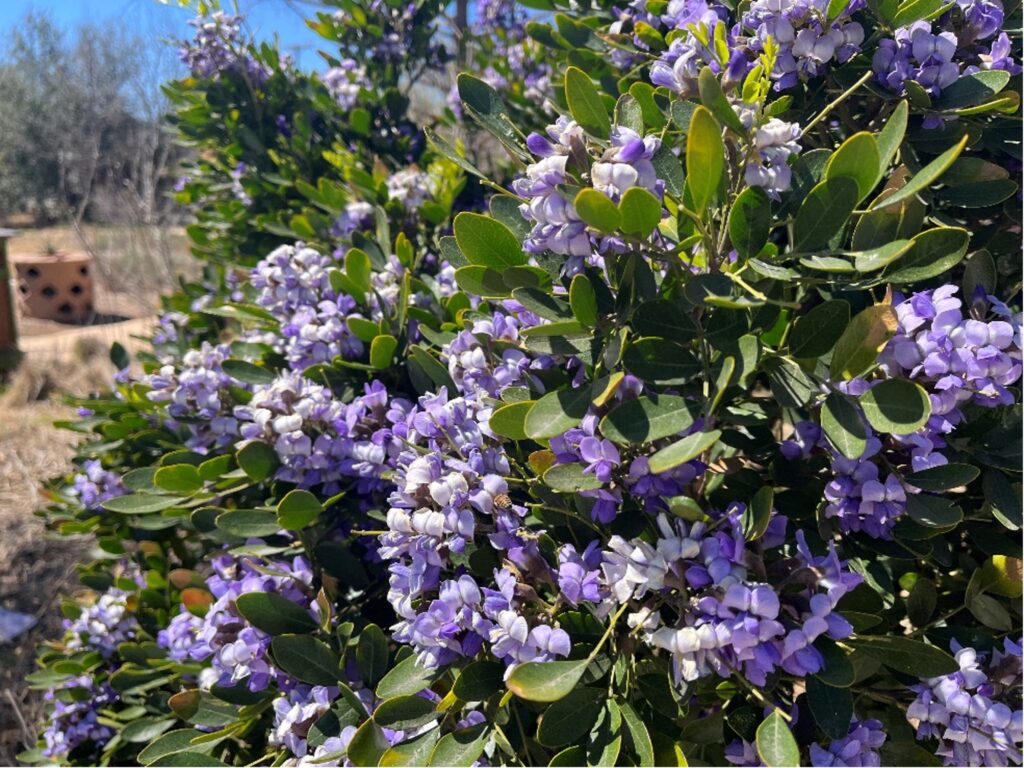Last Updated on January 30, 2024
Most of us celebrate Arbor Day in April, but every day is Arbor Day for Peter Pierson, the Natural Resource Management Specialist for the River Authority. Due to the success of the blog feature, You better be-leaf it! Trees of the San Antonio River, one of the year’s most-viewed blogs, we reached out to Peter to ask him about his top tree picks for homeowners.
Peter Pierson, Natural Resource Management Specialist
What native, drought-tolerant trees do you recommend for homeowners in the San Antonio River Basin?
There are all different sizes and shapes of trees available to fit any need. We have somewhere around 300 species of native trees in Texas. Of course, not all of them are appropriate for every location. Texas is a big state with many different ecoregions, and the species that grow in one will not necessarily be able to grow in another. But we still have a lot to choose from, and these are just a few of the ones I recommend. All the trees listed are native to Texas, drought-tolerant, and well-adapted to our area. As a bonus, they are also on the Texas Firewise plant list. This means these trees have characteristics that may limit their susceptibility to and contribution to the spread of fires.
Read below for a list of small, medium, and large native trees recommended by Peter!
Small Trees
Anacacho orchid tree (Bauhinia lunarioides)
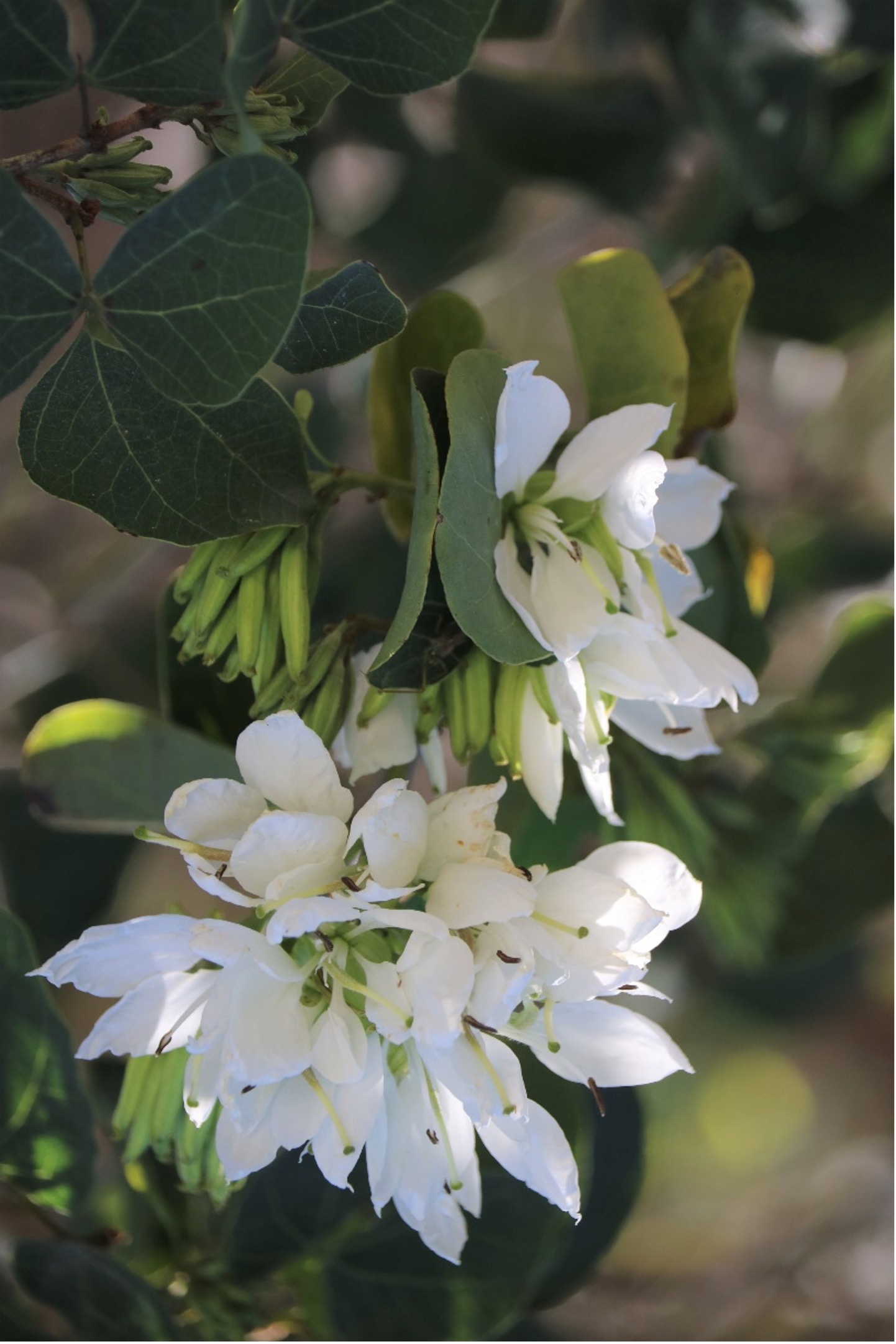
Photo Credit: Lee Marlowe (CC BY-NC)
Anacacho orchid trees are native only to a few canyons in western central Texas and northeastern Mexico. They grow 6 to 12 feet tall, occasionally as a single trunk but more often as a multi-trunked deciduous small tree or shrub. Their unusual leaves are divided into pairs of oval leaflets, while delicate white to pink, fragrant orchid-like flowers appear in the spring from March through May and occasionally after heavy summer or fall rains. Once established, they are drought, heat, and cold-tolerant small trees that will grow in rocky limestone to sandy loam-type soils. These trees make for a unique specimen plant for small areas and are even suitable for use as a container plant. Anacacho orchid trees are valued as a nectar source for butterflies, bees, and even hummingbirds.
Texas mountain laurel (Sophora secundiflora)
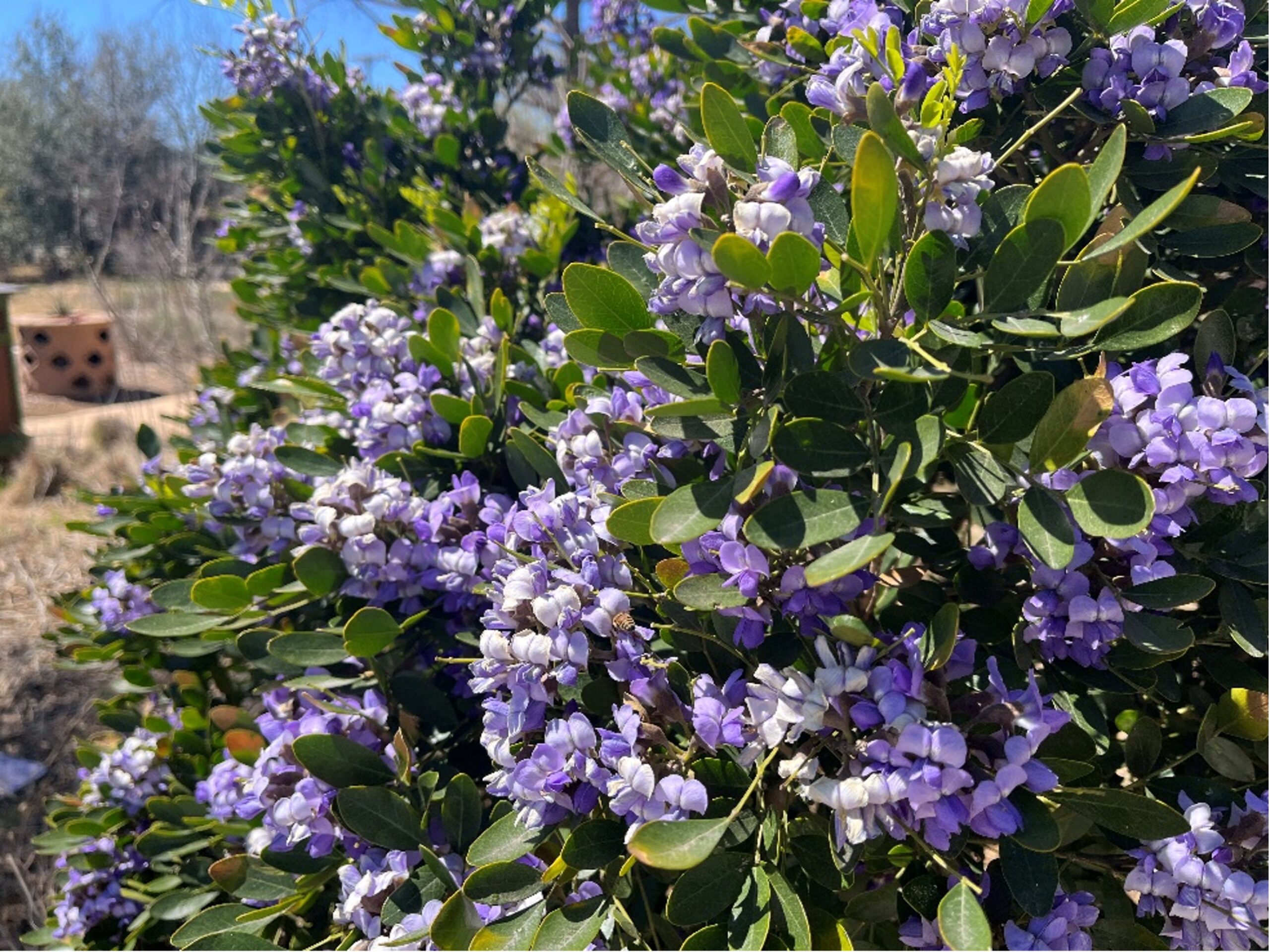
Photo Credit: Emily Rew (CC BY-NC)
Texas mountain laurels are evergreen, normally multi-trunked small trees/shrubs native to central Texas, west into New Mexico, and south into Mexico. These are slow-growing, drought-tolerant, small trees that usually mature at 10 to 15 feet but occasionally reach 30 feet or more. Although they are valued for dark green foliage, they are most recognized for the 3 to 7-inch-long drooping clusters of bluish-lavender flowers that appear in early spring. These blooms usually start in February and last through March or, depending on the weather, into April. The bloom fragrance is often compared to grape soda or Kool-Aid and can be overpowering, particularly when multiple specimens are nearby. Texas mountain laurels are another valued nectar plant attracting bees and butterflies.
Texas persimmon (Diospyros texana)
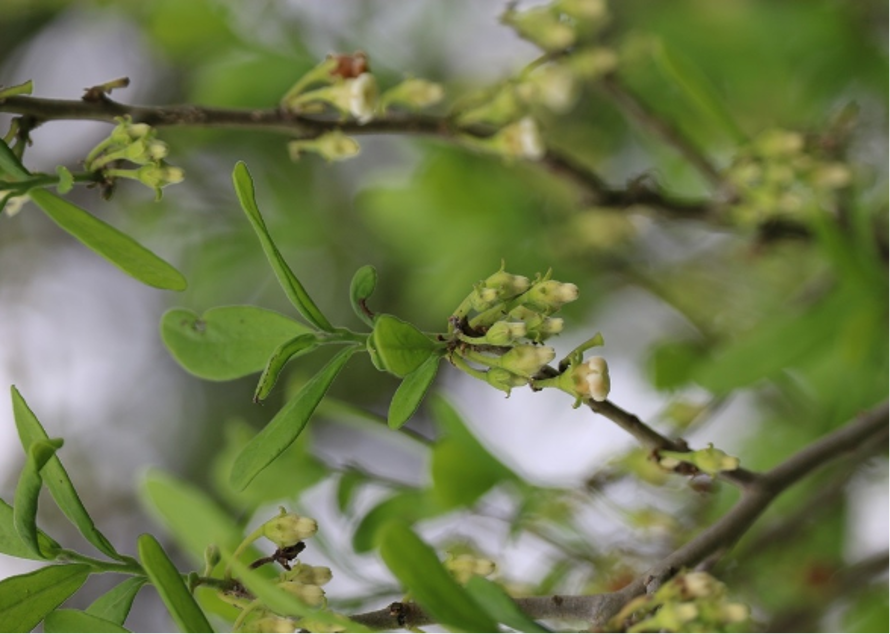
Photo Credit: Lee Marlowe (CC BY-NC)
Texas persimmons are native Texas fruit trees whose range is primarily in the southern half of central and west Texas down to northeast Mexico (with a few pockets in east Texas). These are small trees, usually multi-trunked, growing 10 to 15 feet tall, although in the southern parts of its range, they may reach 35 feet or more. These are generally well-shaped trees known for their smooth greyish-white bark that peels off like crape myrtles. Texas persimmons are dioecious, meaning they have separate male and female trees. The small flowers occur in the spring starting in February and are not considered showy but are sweetly aromatic. Only the female trees produce fruit. These fruits are about an inch across in diameter, seedy, with sometimes bitter and tough skin. However, the fruit’s meat is sweet and used for making jellies, puddings, and even wine. The flowers of the Texas persimmon serve as a nectar source for bees, butterflies, and various insects; the leaves serve as a larval host to the Gray Hairstreak and Henry’s Elfin butterflies. Small mammals such as opossums and raccoons eat the fruit, the lower foliage is browsed by deer, and birds will nest and perch in the trees taking advantage not only of the fruit but other insect visitors to the tree. To top it off, the Texas persimmon is a member of the ebony family of trees with black heartwood prized by woodworkers for making furniture, piano keys, and tool handles, among other items.
Medium Trees
Bigtooth maple (Acer grandidentatum)
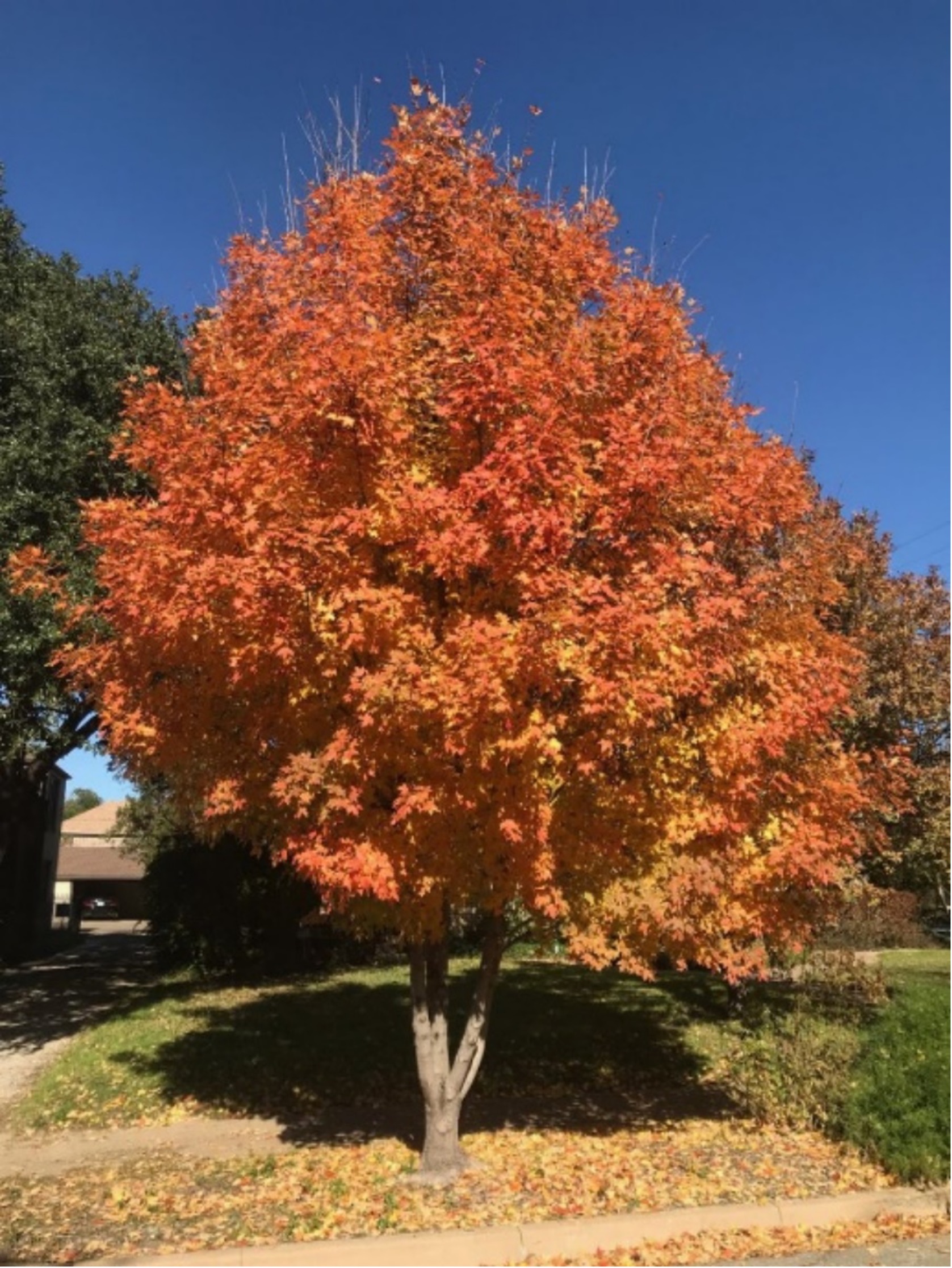
Texas is not usually thought of as maple country. However, when the Ice Age ended and the climate warmed, an isolated forest of bigtooth maple trees survived in an area now known as Lost Maples State Natural Area. Most maples are not well adapted to Texas, but the bigtooth maple is an exception. Slow growing, these trees eventually mature in the 30-to-40-foot size, occasionally larger, with a 20-to-30-foot spread. They will grow in various soils, are both heat and cold-tolerant, are relatively drought-tolerant once established, are pest and disease resistant, and are long-lived. But the reason we really like them is their brilliant fall colors. Their lobed leaves produce shades of bright red and gold.
Eve’s necklace (Styphnolobium affine)
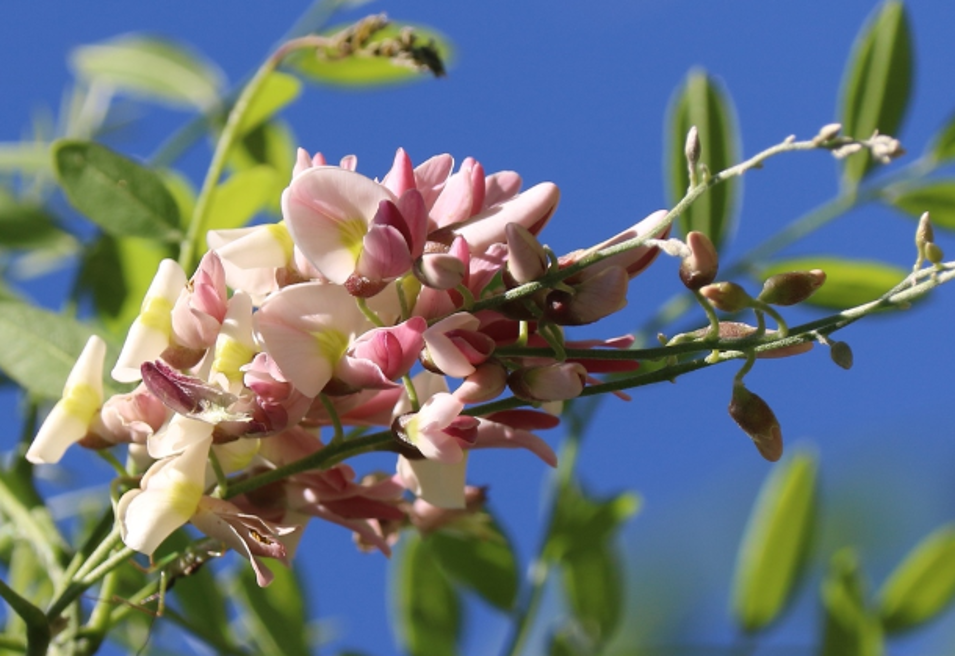
Photo Credit: Lee Marlowe (CC BY-NC)
Eve’s necklace is an ornamental tree that may grow up to 30 to 35 feet tall in part shade with a spread of 15 to 20 feet. The trees bloom in the spring with fragrant clustered pink flowers that mature into black, bead-like strings of seeds, “Eve’s necklace.” Native to central Texas and up into the Dallas area, Oklahoma, and with some limited populations in Arkansas and Louisiana, Eve’s necklace is tolerant of heat and drought, and the flowers attract bees and other nectar-loving insects while serving as a popular nesting site for birds.
Lacey oak (Quercus laceyi)
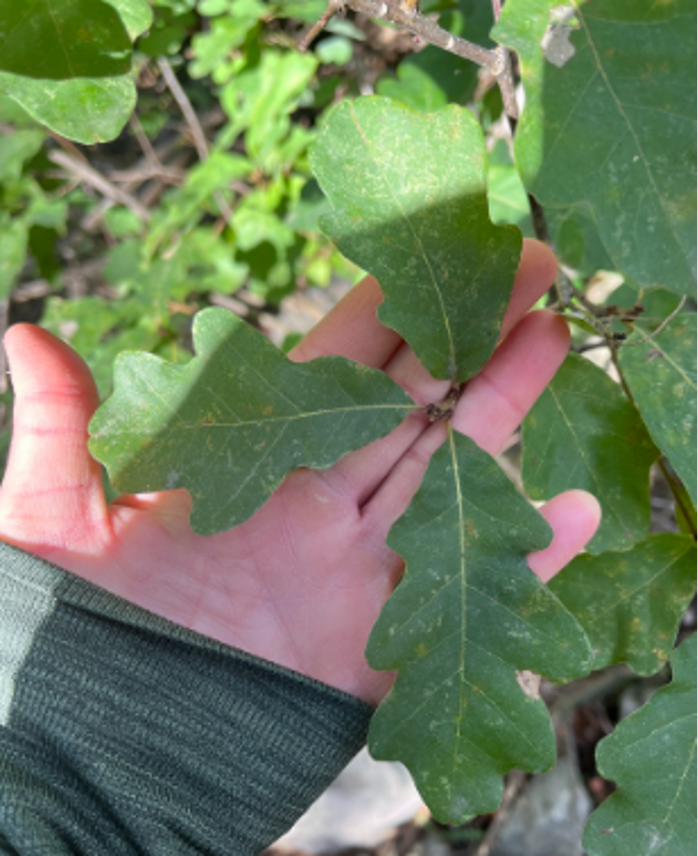
Photo Credit: Emily Rew (CC BY-NC)
I’ve been asked if the “lacey” in Lacey oak refers to the leaves, the bark, or what exactly are they calling lacey on that tree? Actually, the tree is named for Howard Lacey of Kerrville, Texas. Mr. Lacey took a sample of yet-unidentified oak down to his local extension office, where it was determined to be a brand-new species and appropriately named for the man who brought it to their attention. This is a smaller oak tree, though, under ideal conditions, it can still eventually reach 60 feet in height. The leaves are a dark-blue or grayish green in the summer, giving the tree an almost smoky appearance. The Lacey oak is native to the southern and southwestern parts of the Edwards Plateau in Texas and into Mexico. This deciduous tree provides food and cover for deer, small mammals, and birds.
Large Trees
Texas red oak (Quercus buckleyi)
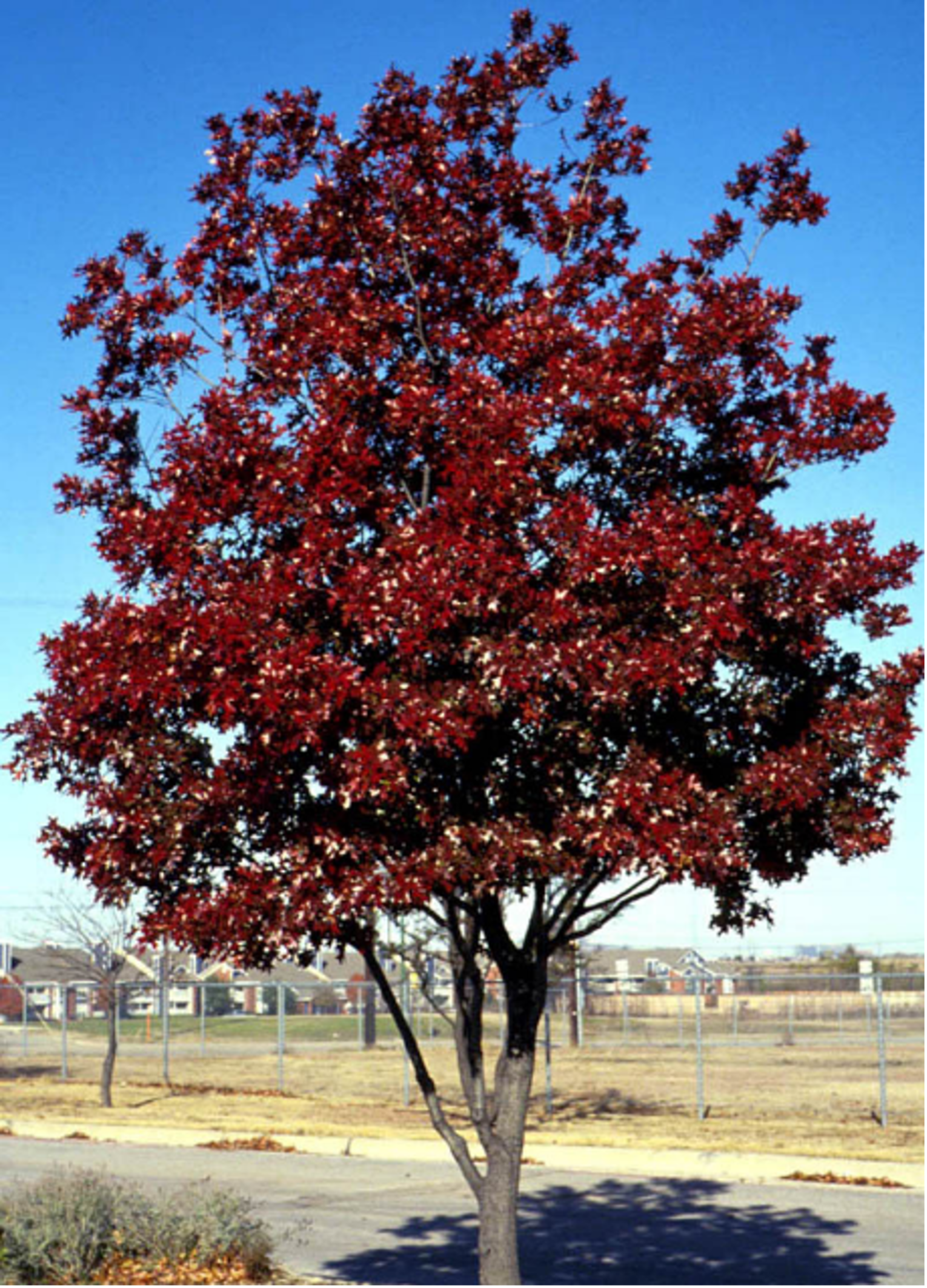
Also known as Buckley’s oak, Texas red oak is generally considered more of a medium tree as it may not reach its full potential size depending on the soil conditions. These trees can grow up to 75 feet tall with a spread up to 60 feet, which is still smaller than the more common Shumard red oak. Our Texas red oak is native to our area in south central Texas up into Oklahoma. A drought-tolerant tree with a moderate growth rate, this is another tree with exceptional fall color. However, it may vary depending on the weather conditions. Although the Shumard red oak is more commonly found for sale, our Texas red oak is better adapted to our area if you can find it.
Chinkapin oak (Quercus muehlenbergii)
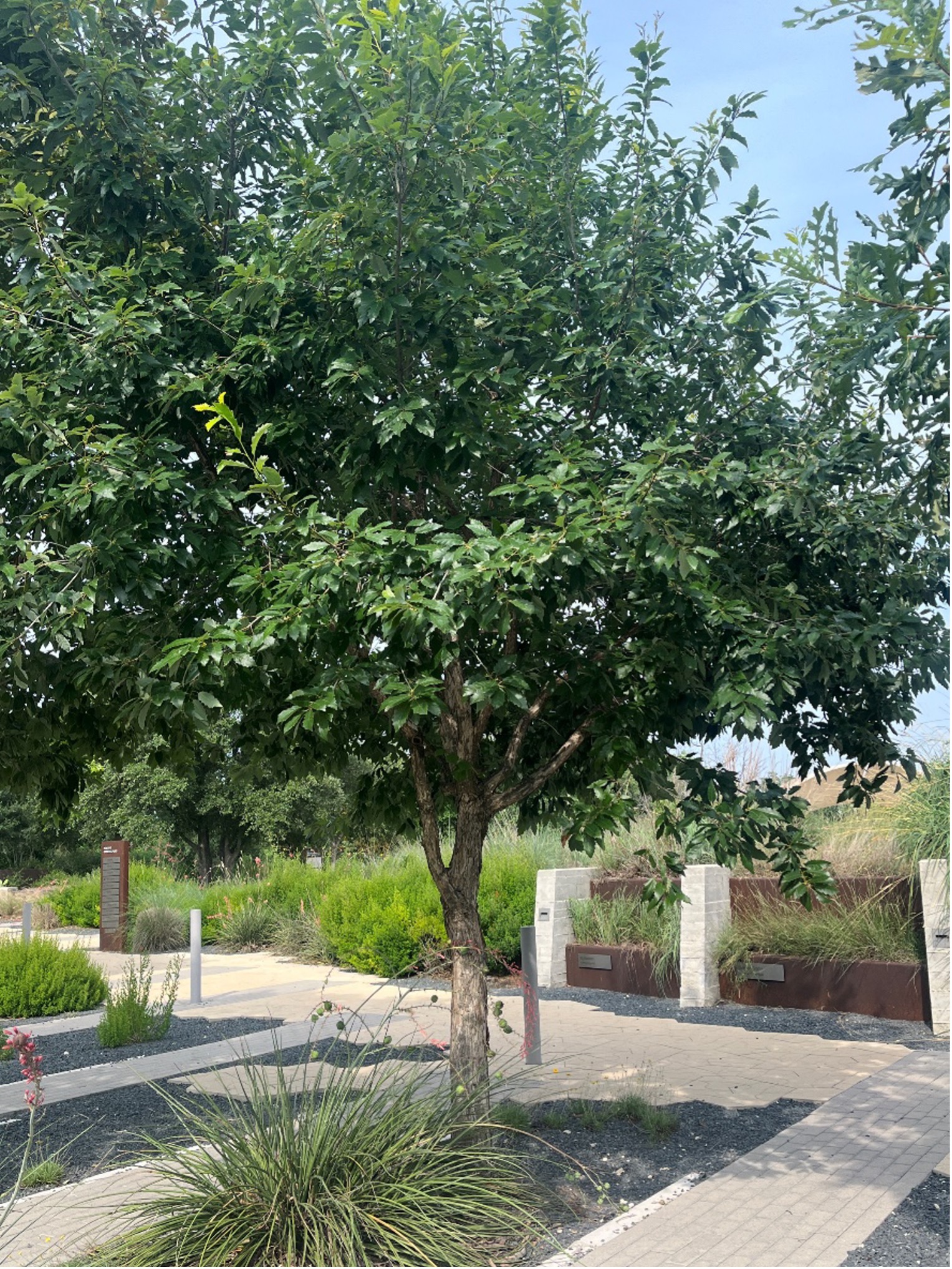
Photo Credit: Emily Rew (CC BY-NC)
Chinkapin oak is one of my favorites. Again, this oak may mature anywhere from a medium to a large tree depending on soil and surrounding conditions. They can grow to 110 feet tall under the right conditions. Still, their growth rate varies with conditions. Therefore, it could take many years for this tree to reach its mature size. It is a reasonably well-adapted tree that grows over a vast expanse of the central and eastern states. Relatively free of diseases and pests, chinkapin oaks attract birds, hummingbirds, and butterflies and act as a larval host for the Gray Hairstreak butterfly. Emerging foliage in the spring starts reddish and matures to dark green, while fall colors may vary from yellows to orange-brown or rich brown. A type of white oak, chinkapins are reported to be less susceptible to oak wilt than many other oak species.
Cedar elm (Ulmus crassifolia)
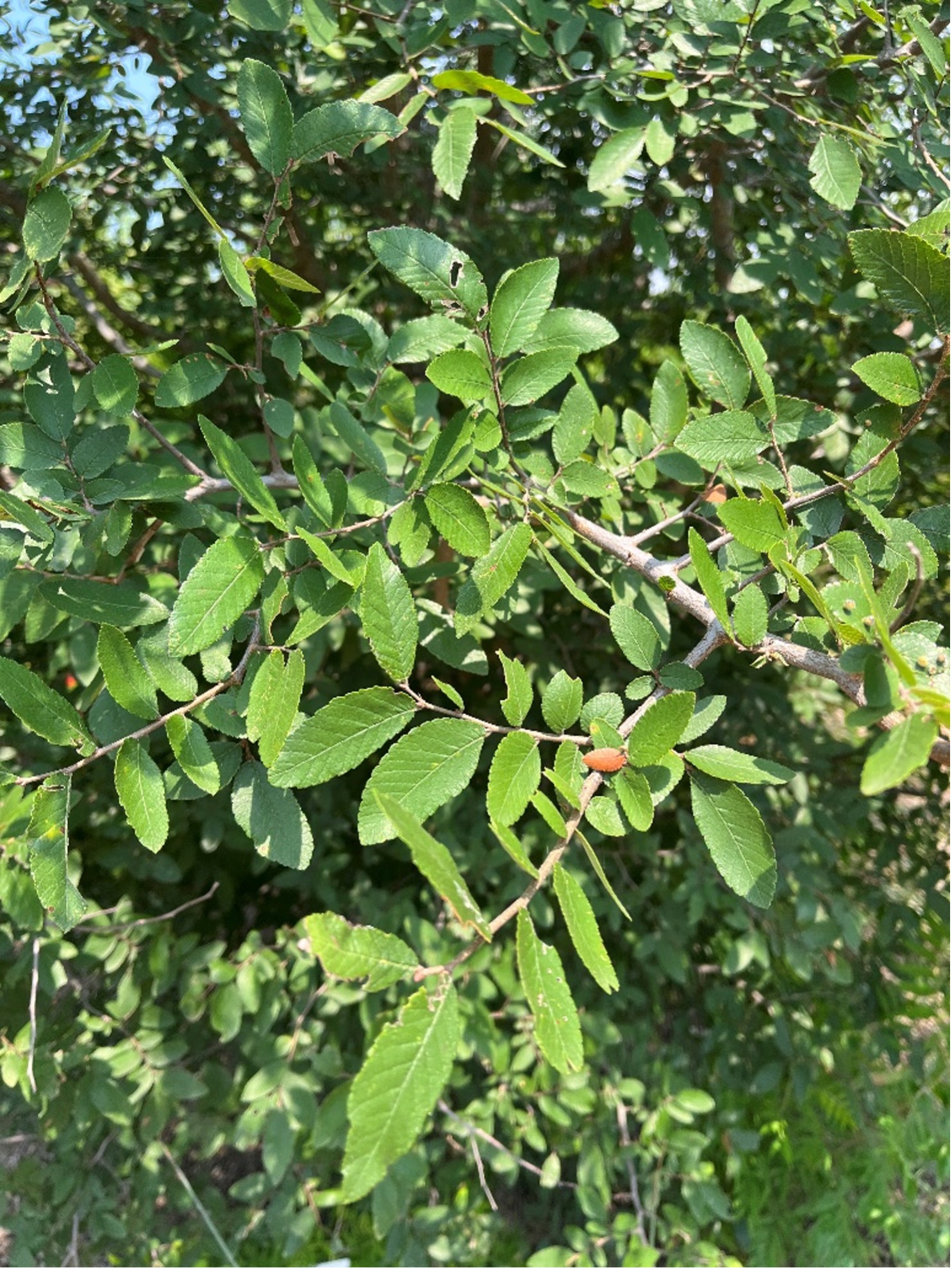
Photo Credit: Emily Rew (CC BY-NC)
One of the most adaptable trees native to our area, cedar elms will grow in just about any soil and under just about any conditions. But again, these conditions will determine whether this tree ends up as a medium-sized or large tree. In shallow rocky soils, they tend to mature in the 30-to-35-foot height. In deeper soils under more favorable conditions, you may end up with a tree twice that size. They are still outstanding, long-lived shade trees with additional wildlife benefits. They make for a popular bird nesting site and produce seeds granivorous birds favor. They attract butterflies and serve as larval hosts for the Mourning Cloak and Question Mark butterflies. And come fall, cedar elms reliably put on a bright yellow display before dropping their leaves.
A Place for Trees
Exciting news for trees and for residents of the San Antonio River Watershed! Land has been acquired for the future Arboretum San Antonio– a tree garden that will provide a park-like setting where people can connect with nature and have the opportunity to observe examples of the many varieties of trees appropriate to the San Antonio area. The River Authority is a proud supporter of this initiative and an advisor to the project, which is still in the early stages of planning and development. Check out this latest video that features Peter discussing the benefits of this project to the San Antonio River Watershed.
Thank you, Peter, for giving us the scoop on our local trees! By choosing to plant these native trees, we are improving the health of the ecosystems of our watershed. Stay tuned for more tree-tastic features here on the River Authority blog.

